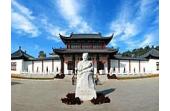Museum Of Kingdom Guo
- Things to do
-
- Photo(10)
- Tips&article(1)
- Make it Happen
- Map
-
loading...
The tomb of Guo state, a cemetery of of Western Zhou and Spring and Autumn period, is the only neatly arrayed and perfectly conserved cemetery with large scale and all the classes of people. It measures 324,500 square meters in total. Since 1956 when it was discovered, people found out over 800 sites of various kinds and nearly 30,000 unearthed antiques.
In particular the two monarches' tombs discovered in the 1990s, thanks to their large amount of unearthed antiques, high values and high status of the people in the tomb, were appraised as one of the new discoveries in China for consecutive two years and were nominated on the list of 100 new discoveries in China during the 20th century.
The basic exhibits are: unearthed antiques from the tomb of Guo state, unearthed antiques from the tomb of the queen in Guo state, the under ground relic groups of chariots and soldiers and the relic group of the tomb of the third prince. The most magnificent are the pit of chariots and soldiers and the prince's tomb.
The exhibition hall contains No.1 pit, No.2 pit and No.3 pit. The three pits are closely connected together with soldiers standing in array. They are the earliest company tombs in China, even earlier than the Terra Cotta Warriors in Qin Dynasty for 600~700 years. They are considered as the largest underground chariot pits in China.
The magnificent king tomb reflects the bury custom and hierarchy in Western Zhou. What's more, there are many jade wares being shaped like living things, taken as a tool to close dead people's eyes in Spring and Autumn Period, such as jade veil shaping like man's facial organs and delicate jade wears that can be worn around the neck.
The iron sword with bronze core and jade hilt is regarded as the first sword in China, indicating the history of our smelting industry is 200 years earlier than we thought. The museum is uniquely built with delicate and sumptuous treasure and magnificent underground battle array. Besides, as the birthplace of Guo family, the place receives many visitors with the family name every year.
The Guo state used to be an enfeoffment of a royal family member in
the early period of Western Zhou. Thanks to its great military
power and brave soldiers, the state won the appreciation of the
royal family and had great influence over the neighbourhood. In the
late Western Zhou, it was moved to Sanmenxia from Shaanxi province,
and founded the capital in Shangyang. Later it offended Jin kingdom
by sparing no effort in protecting the authority of the king in Guo
state. In 655 B.C, Jin kingdom fooled the state by sending troops
from Yu kingdom and finally destroyed the state.
Location: On North Ring road at Hubin district of the city of Sanmenxia,
Henan province, 1.5 kilometers from the city center.
Feature: The museum of Guo state is a relic-themed museum combined with
antique display, relic exhibition and garden view besides the tomb
of Guo state in Western Zhou.
Guidance for visitors
The services provided by the museum are as follows:
Interpreting service: in Mandarin and English language
Parking service: the parking lot stands in front of the museum
gate, therefore it is very convenient.
Shopping service: we sell souvenirs that are mainly mimics of unearth antiquity of
Guo state.
Opening time: 9:00-18:30 in summer and spring (April 1st ~October 30th )
9:00-17:30 in autumn and winter (November 1st~ March 30th )
Traffic routes: take No.1 bus at Sanmenxia railway station, No.6 bus at the entrance of Sanmenxia highway, or No.5 bus, No.1 Shaan bus at the west railway station of Sanmenxia.
Tips & articles
|










